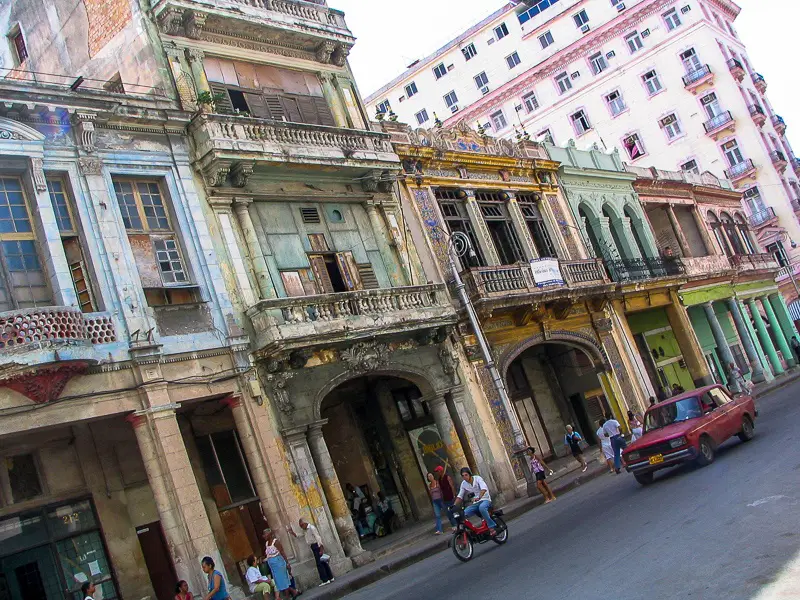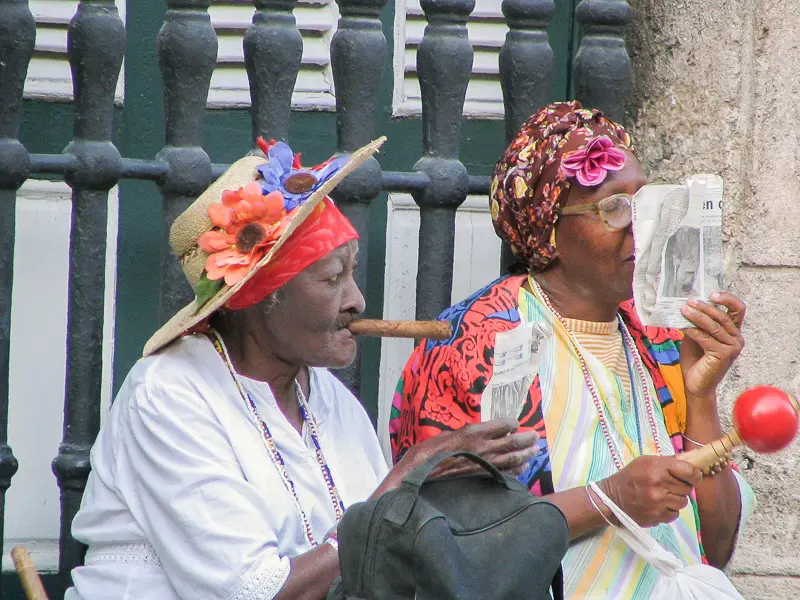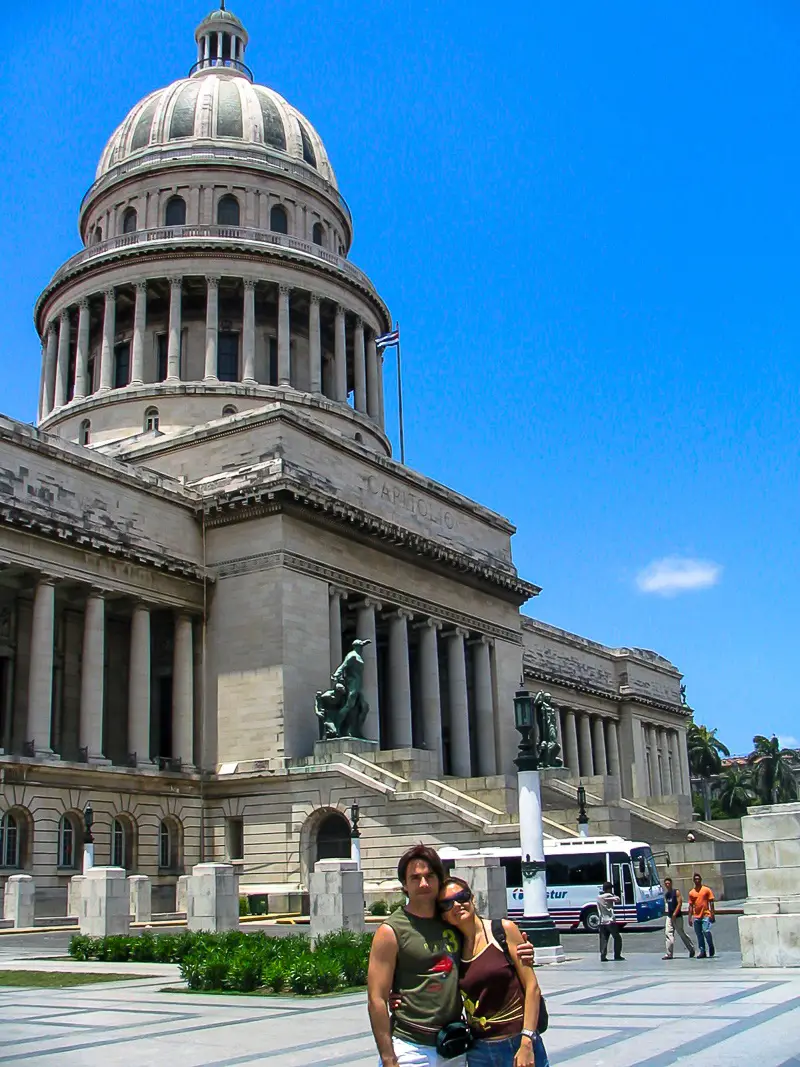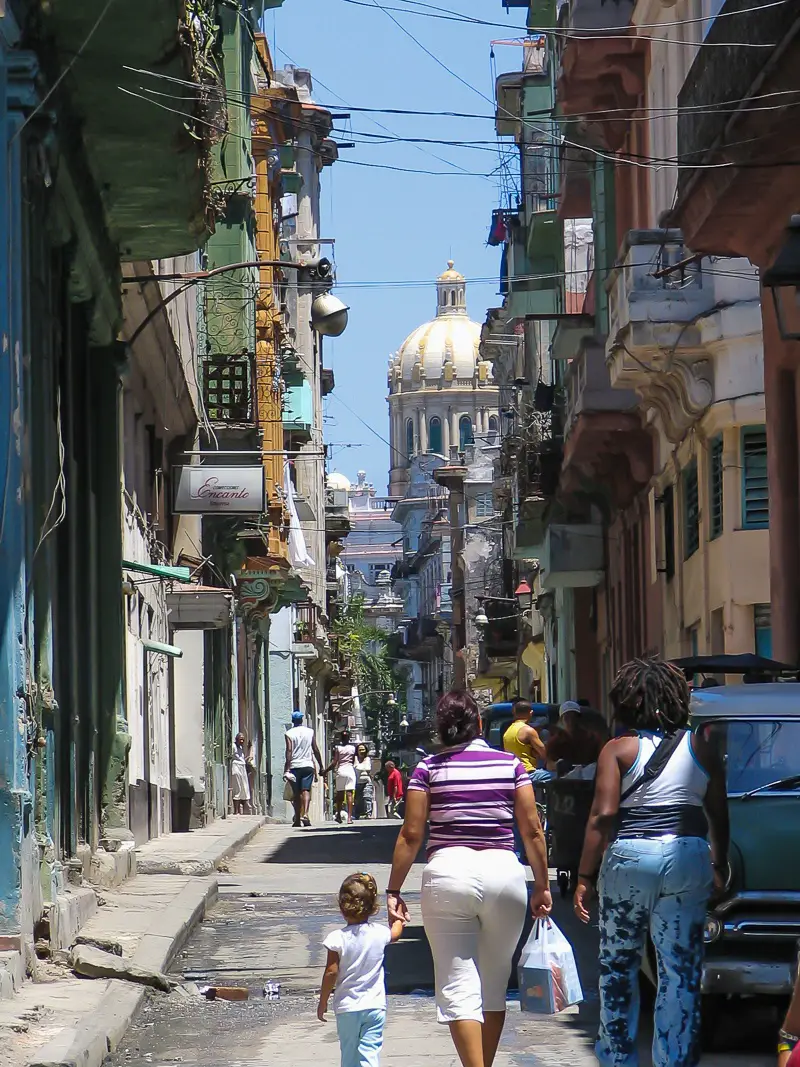Now more than ever, the opportunity of traveling to Cuba from the US is pulling in adventure lovers eager to catch a glimpse of one of the world’s most unique countries. With US/Cuban relations better now than they have been for decades, Americans traveling to Cuba are flocking en masse to the island nation, and travel between the two countries is easier now than it has been for half a century. Nonetheless, there’s still a few things US citizens should know before you head to Havana. It’s not particularly difficult to travel to Cuba as long as you’re aware of Cuba’s unique situation, and the unfolding renewal of relations with Washington.
Note: This is an update of the original post which was written several years ago, the purpose being to include information for Americans who want to visit Cuba now that travel to Cuba from the US is possible.

How to Travel to Cuba
In this post I've tried to cover some of the most frequent topics of confusion for Americans bound for Cuba. Get past these, and you’re ready for one of the most exciting, unique trips you’ll ever have, though make sure you don't overstay your visa!
Can Americans Travel to Cuba? Yes...if You Get Prior Authorization
This is by far the most difficult aspect of US citizens who want to travel to Cuba, though it’s not really that tough once you understand the process.
Technically speaking, the US government still bans its citizens from traveling to Cuba. For years though, eager Americans circumvented this ban by traveling via a third country (typically Mexico or Canada). Cuban officials were even happy to leave passports unstamped, thus ensuring you wouldn’t have any problems on return to the US. Nowadays, things work a little differently, and this old approach is no longer needed.
Since the thaw in relations in December 2014, travel restrictions have been significantly rolled back. Currently, there are 12 categories that allow us citizens to travel to Cuba. According to the US embassy in Havana, these categories include: “family visits; official business of the U.S. government, foreign governments, and certain intergovernmental organizations; journalistic activity; professional research and professional meetings; educational activities; religious activities; public performances, clinics, workshops, athletic and other competitions, and exhibitions; support for the Cuban people; humanitarian projects; activities of private foundations or research or educational institutes; exportation, importation, or transmission of information or informational materials; and certain authorized export transactions”.

The houses in Old Havana seem to be about to fall apart, yet they describe- very elegantly I might say- what the country has been going through during the last 50 years.
If you don’t immediately see yourself fitting into any of these categories, don’t panic! Most reputable travel agencies can make all the arrangements you’ll need to get the green light, such as Insight Cuba and Intrepid Travel. Usually, you’ll be officially listed under a people-to-people visitor. However, if you really want to, you can list yourself under whatever category tickles your fancy. On paper, you’re still supposed to carry documentation to prove why you’re traveling. For example if you decide to call yourself a professional researcher, you’re supposed to have some kind of evidence to show you’re actually planning on engaging in some kind of research – not just tourism. In reality though, neither US nor Cuban officials were enforcing this at the time of writing. All you really need to do is sign an affidavit, and keep it with you This process is now all done with computers and kept by the airline. However, given the still precarious political situation between the two countries, it’s worth seeing what other Americans traveling to Cuba have recently experienced, and try to at least have some kind of credible story in your back pocket. In my case I didn't have a problem, and I visited Cuba even before the ban was lifted.
Getting Authorization Yourself
If you’d rather obtain travel authorization yourself, it’s easy enough to simply hit up the Cuban embassy in Washington. It’s also possible to purchase authorization at the airport before departure, which is by far the simplest option. It means you’ll need to fill out your details on the spot, but so far there’s no reports of travelers having any serious problems with this last minute option.

I took these picture at the Plaza de la Revolucion during one of Fidel Castro's speeches (he's somewhere int the center of the left picture). This one in particular lasted 6 hours, and our trip to Varadero had to be delayed one day because transportation couldn't get past this point.
Purchasing a Visa
Now that we’ve covered travel authorization, let’s look at the Cuban visa system. If you go with an organized tour, your travel agency should get your visa for you. Double check this is the case though. You also shouldn’t need to worry about this if you take a direct charter flight between the US and Cuba. However, if you travel to Cuba from Canada or Mexico then you need to pay attention to this section.
The price of a visa for Americans who want to visit Cuba depends on which airline you fly with, and some carriers will even mail you the documents ahead of time. As a point of interest, the Cuban Tourist Visa (and Cuba considers everyone a tourist, regardless of the definition applied by other countries) issued in the U.S. is pink, while all other countries use a green form. For a sample though, here’s a few of the prices at the time of writing:
- Southwest: $50, purchased online and delivered at the gate
- JetBlue: $50, purchase at gate
- Delta: $50, purchase at gate or through mail
- United: $75 ($50 visa + $25 processing fee), purchase at gate.
- American: $85 ($50 visa + $35 processing fee), purchase online and sent via mail. AA will send instructions.
- Frontier: $110 ($50 visa + $35 processing fee + $25 mailing fee), purchase online and sent via mail. Frontier will send instructions.
Money in Cuba
The golden rule here is bring hard cash, and bring plenty of it. US credit and debit cards can’t be relied on to work in Cuba. However, there’s some discussion about which currency to bring. US dollars are easily sold at official exchange houses (CADECA) and unofficial establishments (read street), but also attract some pretty heavy taxes (around 13 percent). Canadian dollars and euros are taxed at a lower rate by the Cuban government, but you might struggle to change them through unofficial channels, such as in your hotel or on the street. For anyone who doesn’t feel particularly confident, the easiest option is to just bring US dollars, and swap a few at the airport. Then, exchange more through your hotel. To get a better understanding of how the currency situation works, check out this extremely useful primer.

Yup, cigars are certainly part of the Cuban culture.
Other Tidbits
Like in any country, and despite the relaxed Cuban lifestyle, Americans traveling to Cuba should be aware of the local laws and customs. The Cuban embassy has a wealth of information on everything from what to wear, to how many cigars you can bring back (50 at the time of writing).
A few highlights include:
- Cuba has a departure tax of CUC25, though nowadays this should be covered by your airline.
- Firearms are banned in Cuba, so obviously don’t try bringing them in even if you're into hunting!
- Make sure you have yellow fever and cholera vaccinations up to date, especially if you’ve traveled to regions where these diseases are present.
It’s worth reading their page on advice for travelers to Cuba in full, and taking all their recommendations seriously. Most importantly though, have fun! Cuba is an amazing country, and well worth your time.

If you didn't know different you could have thought that this picture was taken somewhere in the US. Cuba is a great destination for couples and families, not just for those seeking adventure.
I'm an American in Cuba Already. What Should I Visit?
Cuba is a very large island and there's not shortage of things to do and places to visit, and while one can wander around for endless weeks there are at least two things I highly recommend you do: explore Old Havana and visit at least one of the island's beaches, my recommendation being Varadero.
Old Havana is like a step back in time. American cars from the 1950's cruise up and down crowded streets aligned with houses that for some obscure reason aren't falling apart, while locals go on with their everyday chores. An owner may invite you to see his or her house- make sure you do, there's nothing to fear and you'll get a better idea of the conditions they live in. You may also be offered lunch, and while this isn't a completely legal business authorities overlook this practice as it's a source of income for families.
Cubans are very friendly and like to talk (males in particular, sometimes too much in my opinion) about themselves, the country, its history and -in some cases- share their political thoughts. One way or another this will be an unforgettable moment.
By the way, as you're already in Cuba, in addition to visiting places of interest you should also try everything which is special in Cuba. Cuba is famous for its cigars, Ropa Vieja and Pan con Lechón for example. Cuban cigars are known around the world and extraordinary (so do smokers say), with different tastes and smells. If you can't visit shops for buying them you can also order Cuban cigars online.

Another view of Old Havana.
The beaches in Cuba are, without a doubt, spectacular. They're what Caribbean beaches are famous for and then more, with turquoise water and white sand. Un crowded yet alive, you'll often find fantastic snorkeling areas just a stone's throw away from the dry sand. Expect to find plenty of starfish and tropical fish just about everywhere as long as there are rocks nearby.
But there's much more to Cuba than these two spots. Other favorite areas in the island are:
- Santiago de Cuba, the island's salsa capital rich in history.
- Vinales, ideal for trekking lovers
- Holguin if you're looking for exciting nightlife.
- Matanzas, with a lot of history.
- Cayo largo del Sur and Cayo Coco, famous for the beautiful beaches and good snorkeling
- Santa Clara, where you'll find the Che Guevara mausoleum.
- Camaguey, rich in history and architechture.
Can Americans visit Cuba? Visit Cuba with kids? Yes you can, and while it's certainly much easier than what it was a few years ago (after all Americans have been traveling there for years, though it wasn't legal) you still can't book a ticket and not consider anything else. This said, despite the extra steps to be takes Cuba is certainly worth visiting, and I recommend you visit Cuba before its essence is lost for good.

So out of date. Should be rewritten to update.
“…now that the travel ban has been withdrawn.”
It has not, of course.
“The houses in Old Havana seem to be about to fall apart, yet they describe- very elegantly I might say- what the country has been going through during the last 50 years.”
The condition of the houses is simply what happens in a tropical climate when upkeep has not been done. The same thing can be seen in Brazil in many areas. Not unique to Cuba or its political situation.
“All you really need to do is sign an affidavit, and keep it with you.”
It’s all computerized. YOU don’t have to keep anything. The airline does it.
“If you’d rather obtain travel authorization yourself, it’s easy enough to simply hit up the Cuban embassy in Washington”
The Cuban Embassy responds to no form of communication these days, besides personal appearance maybe.
“US dollars are easily sold at official exchange houses (CADECA) and unofficial establishments (read street), but also attract some pretty heavy taxes (around 13 percent). ”
The penalty for dollars is 10%. The 3% is charged on ALL currency exchanges, whatever the currency.
Currency “primer” link not working.
“…visit Cuba before its essence is lost for good.”
That could take 30 more years or could already have happened, depending on perspective.
Hi Rosanne,
Thanks for taking the time to share your thoughts. Let me reply.
1) I live in a tropical climate, have been to Brazil and many countries in South America, South East Asia and Africa. I have yet to find a capital city with as many broken down homes as Old Havana when comparing the surrounding wealth. And note that the inside of the houses is usually worse than outside.
2) Thanks for the update. Will add this info.
3) It is true that the Cuban consulate website in Washington http://www.cubadiplomatica.cu/eeuu/EN/Home.aspx has no contact form or phone number. But you can step in.
4) Which makes it 13%
5) Link re-installed, thanks for the heads up.
6) It is a matter of opinion indeed. This said I believe it will be lost as soon as there’s a Starbucks, McDonald’s, a Pizza Hut or any of these other brands, which I’m sure will happen before those 30 years you mention.